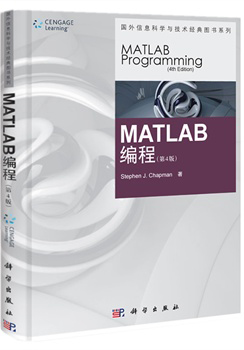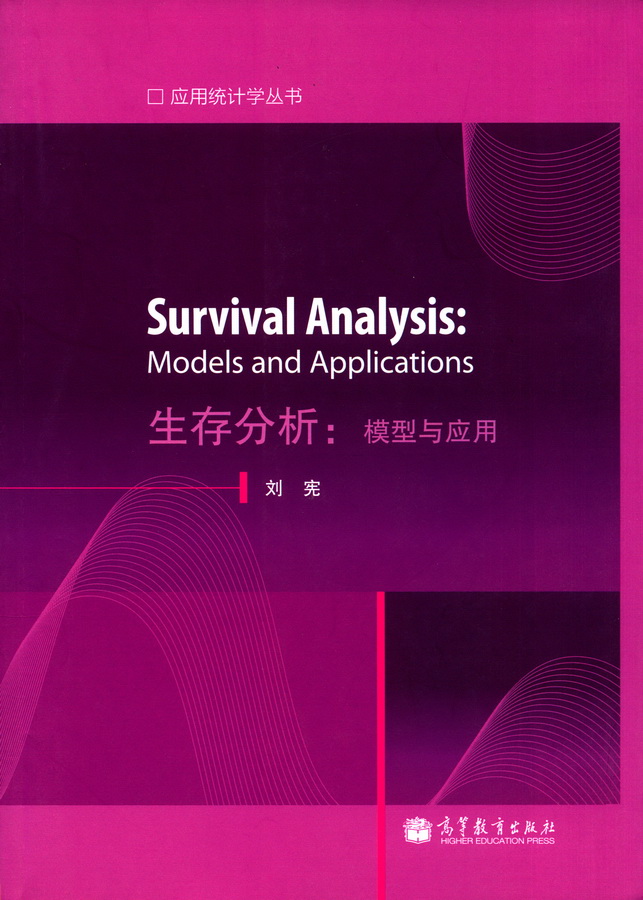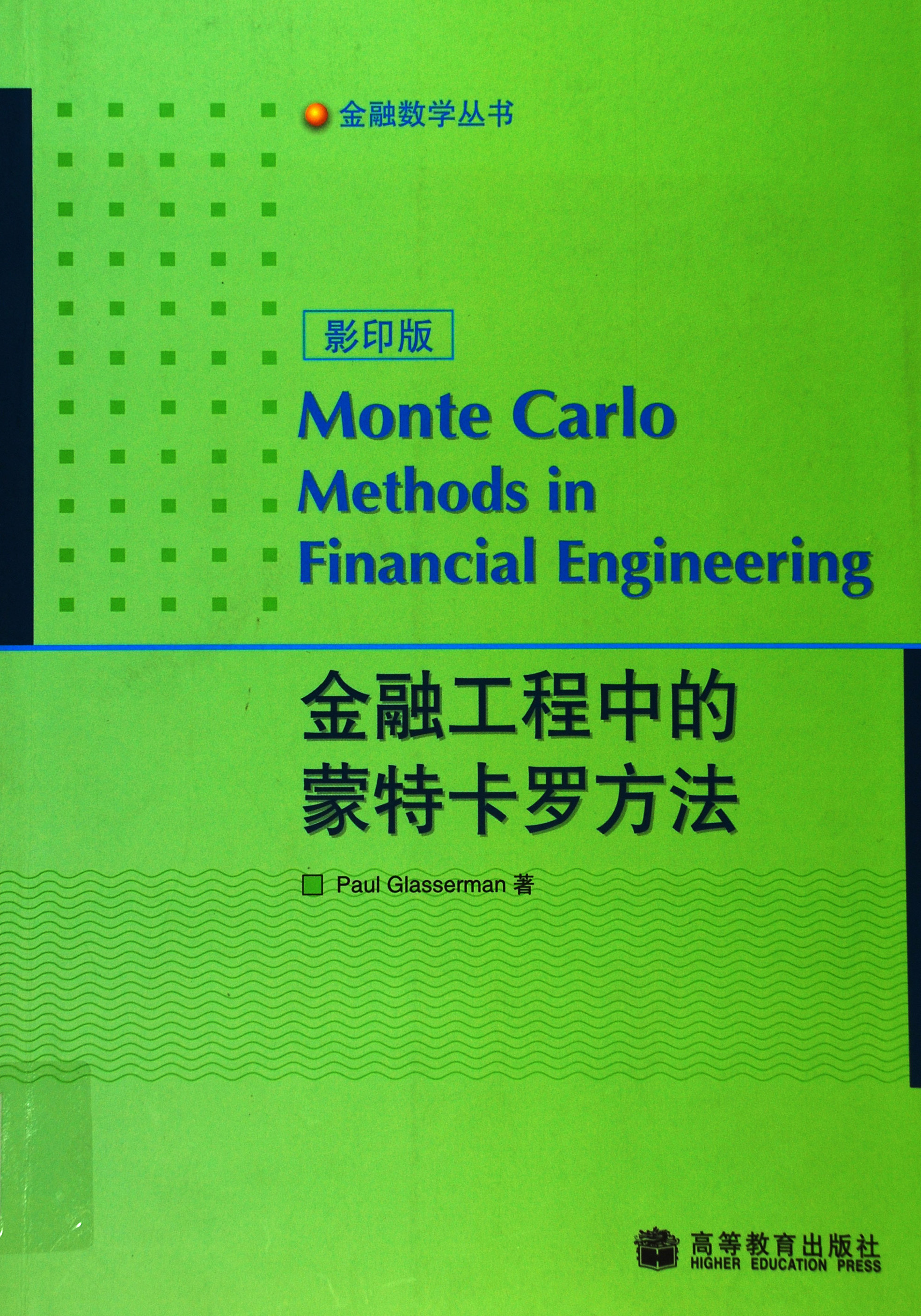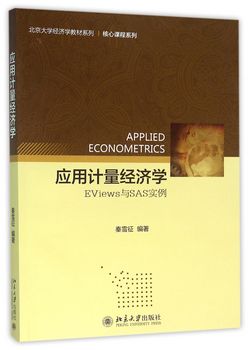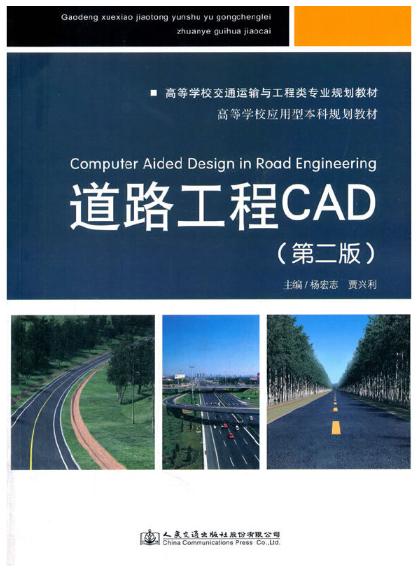MATLAB编程(第四版)(导读版) / 国外信息科学与技术经典图书教材
定价:¥68.00
作者: [澳]Stephen J.Chapman
出版时间:2013年7月
出版社:科学出版社
- 科学出版社
- 9787030305428
- 4-3
- 144114
- 0045159429-5
- 平装
- 16开
- 2013年7月
- 600
- 378
- TP312MA
- 电子信息、通信等
- 本科
内容简介
查普曼所著《MATLAB编程(英文影印版第4版)》详细讲述了利用:MATLAB解决典型技术问题的方法,包括自顶向下的程序设计方法、函数的使用、MATLAB内部工具的使用和数据结构、使用技巧和常见错误等。作者将MATLAB作为一种科技程序设计语言进行介绍,帮助读者编写出简洁、高效、组织良好的程序;同时,帮助读者使用MATLAB的扩展在线帮助功能来找到所需的函数。本书注重提高读者利用MATLAB解决实际问题的能力,为将来的学习与研究工作打下良好的基础。
本书可作为工科各专业本科生的教学用书,也可作为工程技术人员的参考书。
本书可作为工科各专业本科生的教学用书,也可作为工程技术人员的参考书。
目录
CHAPTER 1 Introduction to MATLAB
1.1 The Advantages of MATLAB
1.2 Disadvantages of MATLAB
1.3 The MATLAB Environment
1.3.1 The MATLAB Desktop
1.3.2 The Command Window
1.3.3 The Command History Window
1.3.4 The Start Button
1.3.5 The Edit/Debug Window
1.3.6 Figure Windows
1.3.7 Docking and Und0cking Windows
1.3.8 The MATLAB Workspace
1.3.9 The Workspace Browser
1.3.10 Getting Help
1.3.11 A Few Important Commands
1.3.12 The MATLAB Search'Path
1.4 Using MATLAB as a Scratch Pad
1.5 Summary
1.5.1 MATLAB Summary
1.6 Exercises
CHAPTER 2 MATLAB Basics
2.1 Variables and Arrays
2.2 Creating and Initializing Variables in MATLAB
2.2.1 Initializing Variables in Assignment Statements
2.2.2 Initializing with Shortcut Expressio
2.2.3 Initializing with Built-In Functio
2.2.4 Initializing Variables with Keyboard Input
2.3 Multidimeional Arrays
2.3.1 Storing Multidimeional Arrays in Memory
2.3.2 Accessing Multidimeional Arrays with One Dimeion
2.4 Subarrays
2.4.1 The end Function
2.4.2 Using Subarrays on the Left-Hand Side of an Assignment Statement
2.4.3 Assigning a Scalar to a Subarray
2.5 Special Values
2.6 Displaying Output Data
2.6.1 Changing the Default Format
2.6.2 The disp function
2.6.3 Formatted Output with the fprint f Function
2.7 Data Files
2.8 Scalar and Array Operatio
2.8.1 Scalar Operatio
2.8.2 Array and Matrix Operatio
2.9 Hierarchy of Operatio
2.10 Built-in MATLAB Functio
2.10.1 Optional Results
2.10.2 Using MATLAB Functio with Array Inputs
2.10.3 Common MATLAB Functio
2.11 Introduction to Plotting
2.11.1 Using Simple xy Plots
2.11.2 Printing a Plot
2.11.3 Exporting a Plot as a Graphic Image
2.11.4 Multiple Plots
2.11.5 Line ne Style. Marker Style. and Legends
2.11.6 Logarithmic Scales
2.12 Examples
2.13 Debugging MATLAB Programs
2.14 Summary
2.14.1 Summary of Good Programming Practice
2.14.2 MATLAB Summary
2.15 Exercises
CHAPTER 3 Branching Statements and Program Design
3.1 Introduction to Top-Down Design Techniques
3.2 Use of Pseudocode
3.3 The Logical Data Type
3.3.1 Relational Operato
3.3.2 A Caution About the ==and = Operato
3.3.3 Logic Operato
3.3.4 Logical Functio
3.4 Branches
3.4.1 Cotruct
3.4.2 Examples g tructs
3.4.3 Notes Concerning the Use of if Cotructs
3.4.4 The switch Cotruct
3.4.5 The try/catch Cotruc!
3.5 Additional Plotting Features
3.5.1 Controlling x- and y-Axis Plotting Limits
3.5.2 Plotting Multiple Plots on the Same Axes
3.5.3 Creating Multiple Figures
3.5.4 Subplots
3.5.5 Enhanced Control of Plotted Lines
3.5.6 Enhanced Control of TextStrings
3.5.7 Polar Plots
3.5.8 Annotating and Saving Plots
3.6 More on Debugging MATLAB Programs
3.7 Summary
3.7.1 Summary of Good. Programming Practice
3.7.2 MATLAB Summary
3.8 Exercises
CHAPTER 4 Loops
4.1 The while Loop
4.2 The for Loop
4.2.1 Details of Operation
4.2.2 The MATLAB Just-in-Time (JIT)Compiler
4.2.3 The break and continue Statements
4.2.4 Nesting Loops
4.3 Logical Arrays and Vectorization
4.3.1 Creating the Equivalent of if/else Cotructs with Logical Arrays
4.4 The MATLAB Profiler
4.5 Additional Examples
4.6 Summary
4.6.1 Summary of Good Programming Practice
4.6.2 MATLAB Summary
4.7 Exercises
CHAPTER 5 User-Defined Functio
5.1 Introduction to MATLAB Functio
5.2 Variable Passing in MATLAB: The Pass-by-Value Scheme
5.3 Optional Arguments
5.4 Sharing Data Using Global Memory
5.5 Preserving Data between Calls to a Function
5.6 Function Functio
5.7 Subfunctio. Private Functio. and Ne
1.1 The Advantages of MATLAB
1.2 Disadvantages of MATLAB
1.3 The MATLAB Environment
1.3.1 The MATLAB Desktop
1.3.2 The Command Window
1.3.3 The Command History Window
1.3.4 The Start Button
1.3.5 The Edit/Debug Window
1.3.6 Figure Windows
1.3.7 Docking and Und0cking Windows
1.3.8 The MATLAB Workspace
1.3.9 The Workspace Browser
1.3.10 Getting Help
1.3.11 A Few Important Commands
1.3.12 The MATLAB Search'Path
1.4 Using MATLAB as a Scratch Pad
1.5 Summary
1.5.1 MATLAB Summary
1.6 Exercises
CHAPTER 2 MATLAB Basics
2.1 Variables and Arrays
2.2 Creating and Initializing Variables in MATLAB
2.2.1 Initializing Variables in Assignment Statements
2.2.2 Initializing with Shortcut Expressio
2.2.3 Initializing with Built-In Functio
2.2.4 Initializing Variables with Keyboard Input
2.3 Multidimeional Arrays
2.3.1 Storing Multidimeional Arrays in Memory
2.3.2 Accessing Multidimeional Arrays with One Dimeion
2.4 Subarrays
2.4.1 The end Function
2.4.2 Using Subarrays on the Left-Hand Side of an Assignment Statement
2.4.3 Assigning a Scalar to a Subarray
2.5 Special Values
2.6 Displaying Output Data
2.6.1 Changing the Default Format
2.6.2 The disp function
2.6.3 Formatted Output with the fprint f Function
2.7 Data Files
2.8 Scalar and Array Operatio
2.8.1 Scalar Operatio
2.8.2 Array and Matrix Operatio
2.9 Hierarchy of Operatio
2.10 Built-in MATLAB Functio
2.10.1 Optional Results
2.10.2 Using MATLAB Functio with Array Inputs
2.10.3 Common MATLAB Functio
2.11 Introduction to Plotting
2.11.1 Using Simple xy Plots
2.11.2 Printing a Plot
2.11.3 Exporting a Plot as a Graphic Image
2.11.4 Multiple Plots
2.11.5 Line ne Style. Marker Style. and Legends
2.11.6 Logarithmic Scales
2.12 Examples
2.13 Debugging MATLAB Programs
2.14 Summary
2.14.1 Summary of Good Programming Practice
2.14.2 MATLAB Summary
2.15 Exercises
CHAPTER 3 Branching Statements and Program Design
3.1 Introduction to Top-Down Design Techniques
3.2 Use of Pseudocode
3.3 The Logical Data Type
3.3.1 Relational Operato
3.3.2 A Caution About the ==and = Operato
3.3.3 Logic Operato
3.3.4 Logical Functio
3.4 Branches
3.4.1 Cotruct
3.4.2 Examples g tructs
3.4.3 Notes Concerning the Use of if Cotructs
3.4.4 The switch Cotruct
3.4.5 The try/catch Cotruc!
3.5 Additional Plotting Features
3.5.1 Controlling x- and y-Axis Plotting Limits
3.5.2 Plotting Multiple Plots on the Same Axes
3.5.3 Creating Multiple Figures
3.5.4 Subplots
3.5.5 Enhanced Control of Plotted Lines
3.5.6 Enhanced Control of TextStrings
3.5.7 Polar Plots
3.5.8 Annotating and Saving Plots
3.6 More on Debugging MATLAB Programs
3.7 Summary
3.7.1 Summary of Good. Programming Practice
3.7.2 MATLAB Summary
3.8 Exercises
CHAPTER 4 Loops
4.1 The while Loop
4.2 The for Loop
4.2.1 Details of Operation
4.2.2 The MATLAB Just-in-Time (JIT)Compiler
4.2.3 The break and continue Statements
4.2.4 Nesting Loops
4.3 Logical Arrays and Vectorization
4.3.1 Creating the Equivalent of if/else Cotructs with Logical Arrays
4.4 The MATLAB Profiler
4.5 Additional Examples
4.6 Summary
4.6.1 Summary of Good Programming Practice
4.6.2 MATLAB Summary
4.7 Exercises
CHAPTER 5 User-Defined Functio
5.1 Introduction to MATLAB Functio
5.2 Variable Passing in MATLAB: The Pass-by-Value Scheme
5.3 Optional Arguments
5.4 Sharing Data Using Global Memory
5.5 Preserving Data between Calls to a Function
5.6 Function Functio
5.7 Subfunctio. Private Functio. and Ne

